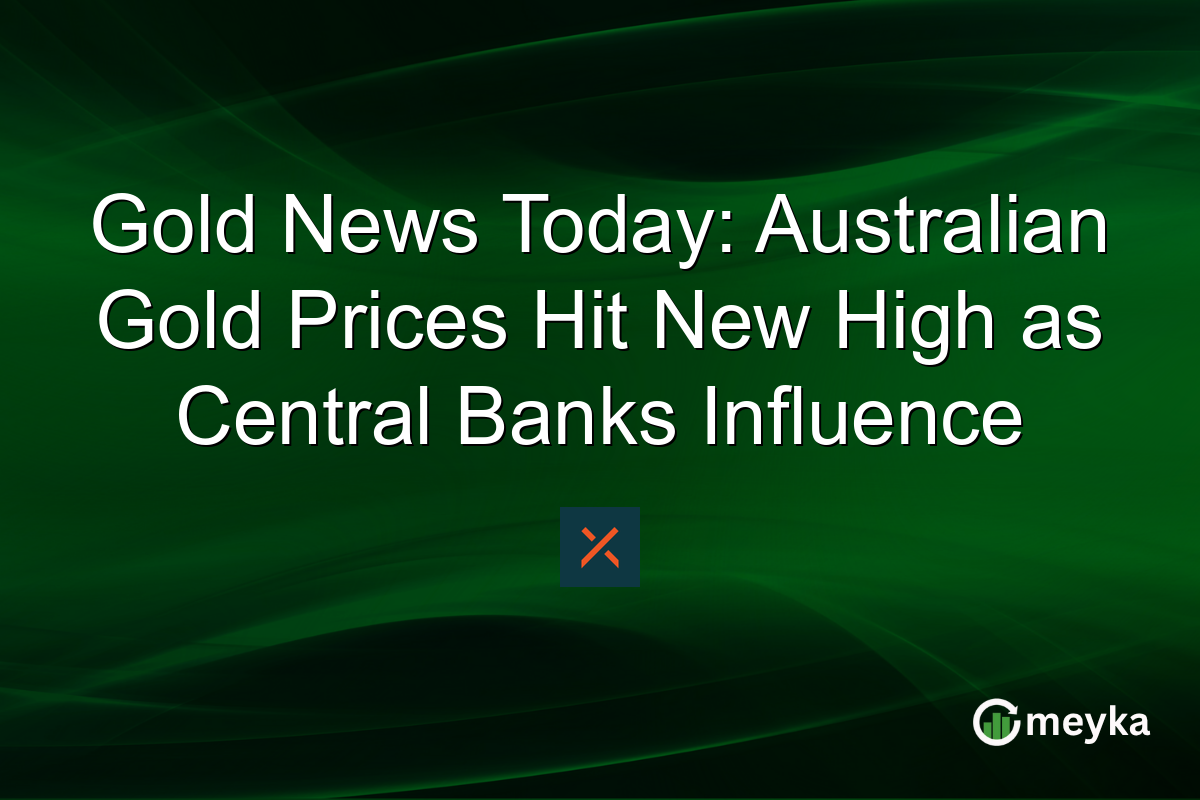Gold News Today: Australian Gold Prices Hit New High as Central Banks Influence
Today, Australian gold prices have surged to a new record high. This upward movement is attributed to increased demand from central banks and heightened interest from investors. The weakening of the Australian dollar further amplifies this trend. The rising gold price underscores growing concerns over inflation and global economic uncertainties, leading to a wave of safe-haven buying across the region. For many, this marks a significant shift in the gold market trend.
Central Banks and Increased Gold Demand
Central banks worldwide are bolstering their gold reserves. This trend plays a notable role in driving up gold prices globally, and Australia is no exception. Recent data from the World Gold Council shows central banks purchased 400 tonnes during the last quarter. This demand creates a robust foundation for pricing increases.
This heightened buying activity reflects broader economic concerns, positioning gold as a strategic asset to diversify reserves and mitigate risks associated with global market volatility.
Impact of the Aussie Dollar on Gold Prices
The depreciation of the Australian dollar has further fueled the increase in local gold prices. As the Aussie dollar weakens, gold becomes more attractive to non-Australian investors, boosting demand. Currency fluctuations often make gold an appealing hedge against volatility, supporting its continued price increase.
This dynamic is crucial for local investors assessing the gold market trend, as currency movements directly influence gold’s purchasing power and attractiveness as an investment.
Gold Investment in Australia: Opportunities and Risks
For investors in Australia, the soaring gold price presents both opportunities and risks. The current bull run in gold offers potential gains due to safe-haven status amidst market jitters. Data shows major Australian gold stocks, such as GOLD.AX, performing robustly. This includes a 41.4% increase over the past year.
However, investors should remain cautious of volatility. While the market sentiment remains positive, the high RSI of 79.98 suggests that the market is overbought, potentially leading to corrections.
Current Market Reactions and Future Expectations
Market reactions to this gold price surge have been significant. Analysts predict sustained demand, projecting gold prices to hold strong barring major policy shifts or economic changes. Predictions for GOLD.AX show continued strength, suggesting stability even amidst global financial turbulence.
For many investors, this is a confirmation of gold’s enduring value as a hedge. Future expectations are optimistic, assuming central banks maintain their current buying trends and the Aussie dollar remains subdued.
Final Thoughts
In conclusion, the surge in Australian gold prices is a multi-faceted phenomenon driven by central banks, currency movements, and investor behavior. As central banks continue to augment their holdings, gold remains a cornerstone of financial stability amidst global uncertainties. The weakening Australian dollar further accentuates this trend, attracting both local and international investments.
For investors, this presents a promising yet complex landscape. While there’s potential for continued gains, awareness of market dynamics is essential. Platforms like Meyka provide AI-powered insights that can aid investors in making informed decisions. However, the ever-changing market environment requires vigilance and strategic planning.
With careful analysis, investors can leverage this scenario effectively, balancing short-term gains with long-term financial strategies.
FAQs
The weakening Australian dollar makes gold cheaper for international buyers, increasing demand and pushing prices higher domestically. It acts as a hedge against local currency depreciation, enhancing its appeal as an investment.
Central banks are increasing gold purchases to diversify reserves and protect against economic uncertainties. Gold is a stable, inflation-resistant asset that provides security during times of global financial volatility.
Investing in gold carries risks like market volatility and potential price corrections, especially after a significant surge. Overbought indicators, like a high RSI, suggest that prices may correct in the short term, so investors need to be vigilant.
Disclaimer:
This is for information only, not financial advice. Always do your research.






